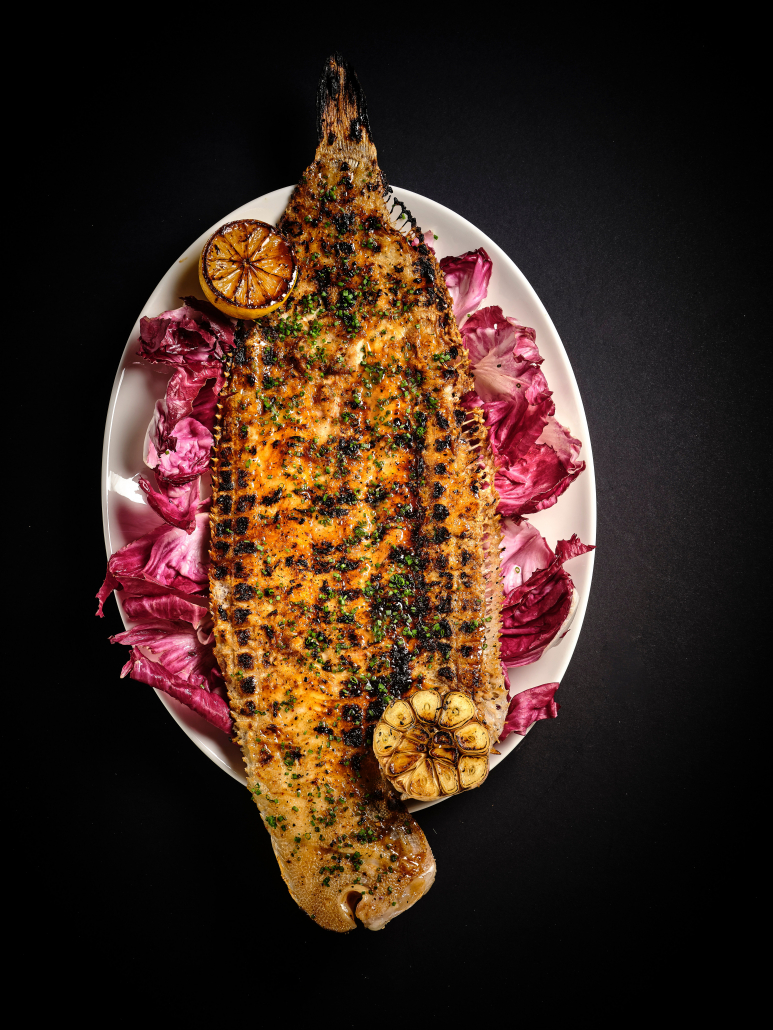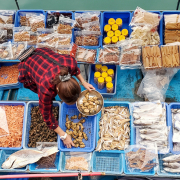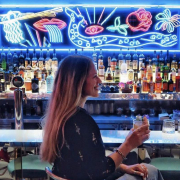
Q&A: Chef Olivier Elzer talks about his new restaurant Clarence and culinary inspirations
Olivier Elzer is one of Hong Kong’s favourite French chefs. His illustrious career, having spent the last 13 years in the city, has seen him work at some of the finest restaurants. In 2009, he was tapped to be the head chef of the highly acclaimed Pierre in the Mandarin Oriental, later he worked at L’Atelier de Joël Robuchon Hong Kong and led the restaurant to three Michelin stars. Captivated by the city and its vibrant culinary scene, he struck out on his own and co-founded his first solo restaurant Seasons in 2014.
Elzer now operates two restaurants, namely the two-Michelin-starred L’Envol at The St. Regis Hong Kong, and his latest development – Clarence, which has recently opened on the 25th floor of H Code in Central.

Clarence is a brand new modern French concept presented by Elzer that aims to recreate traditional French recipes and flavours with Asian cooking methods. Perhaps the most intriguing part of Clarence’ menu is the “Yakifrenchy,” which is a new approach to cooking that combines French classics such as Duck Confit, Frogs’ Legs, Snails, and Ratatouille on skewers and cooked on the robata grill.
Enamoured by the concept, I spoke with Elzer to discover more about his new restaurant, his culinary inspirations, and his thoughts on the ever-changing local dining scene. Below, our conversation.
What inspired you to open Clarence? Can you tell us about the development of the concept behind it?
I have been working as a fine-dining chef for 27 years at different Michelin-starred restaurants in France and Hong Kong. I am very proud and grateful to have worked under the mentorship of some of the greatest chefs in the world, like Pierre Gagnaire and Joël Robuchon. However, I also want something under my name as I like to have different formats in my creation. I am very inspired by my mentor Joël Robuchon, when he created L’Atelier de Joël Robuchon in Tokyo in 2003, he combined Spanish and Japanese influences such as tapas and teppanyaki altogether and presented the cuisine in the French way. Therefore, when I was designing the concept of Clarence, I knew that I did not want to do the traditional French Bistro or Brasserie format. Instead, I am creating a new style of restaurant, where we showcase carefully selected French dishes in a new presentation with Asian cooking techniques and influence. Clarence has three different features:
Raw & Wine Bar

The sommelier and chef behind the bar focus on the wine and the raw seafood preparations. The food here is refreshing and not too heavy, which is different from the traditional creamy flavours of fish found in French cuisine.
Yakifrenchy

I love to eat yakitori and I think my new concept of having grilled French classics on skewers paired with different sauces is very unique and piques my clients’ interest.
Fish and meat cooked and served on the bone

Cooked on the bone actually comes from a very French way of eating. However, it is hard to do at fine dining ventures, yet it is easier in more casual restaurants like Clarence. Besides, this concept also pays homage to local dining culture where friends and family gather over shared plates.
What would you say influences your style of cooking?
The answer would be my clients. I have a strong network of loyal clients that have been following me for 13 years. As I believe myself to be a chef who strives for innovation, I always offer my clients something interesting, from different recipes and dishes to new combinations. I keep this mindset for all of the restaurants that I operate. Finding new suppliers, products, and ideas that make the meals enjoyable to make the client happy is my goal.
Do you have any favourite ingredients?
I love seafood and I like to show my clients that there are many varieties of fish available. You tend to see the same fish in restaurants in Hong Kong, such as sea bass, codfish, salmon, and tuna, but there are actually hundreds of varieties of fish. We try to offer something different by ordering the freshest ingredients and we receive daily delivery from France and Japan. I am also happy to incorporate local produce, such as sea snails from Aberdeen and yellow chicken from Yuen Long. I think the key is to use the freshest ingredients and to work it in the French way.
Can you recommend a dish on the menu that is one of your favourites, and suggest a wine to pair with it?

My recommended dish is Black Prawn with Tonka Beans and Lemon Peels. The black prawn is in beautiful sashimi quality and tonka beans are usually used in desserts but pair flawlessly with the prawns, and lemon peels give a kick in the freshness. I would pair this dish with Chassagne Montrachet 2018 from Marc Colin because its acidity and fruitiness balance and match the sweetness of the dish very well.
As we head into summer, are there ingredients you are excited to incorporate or that we could potentially expect?
I am all about cooking seasonally and using the freshest produce I can get my hands on. Right now at the beginning of summer, it is green pea and asparagus season in France. I am also excited to create some blue lobster dishes during the summer season. There are more new ingredients that I am planning to add to the menu but you will have to come to Clarence to find out!
Are there any particular challenges to cooking French cuisine in Hong Kong?


Most of the challenges in adapting traditional French cuisine reside in its high consumption of dairy, butter, and cream, which makes it a bit too heavy and overwhelming to the local clients’ palates. There are over 50 styles of cooking in France, but in Hong Kong, we tend to use two to three of the most popular styles. Clarence is an interpretation of me trying to bring the food in a lighter presentation and a lighter way to eat. I am very health conscious, and I want to showcase that too in my menu. I want my clients to walk out of my restaurant after a meal feeling satisfied but not heavy.
Does having Michelin stars to your name come with its own kind of pressure?
Being a chef is a lot of dedication and hard work, but I enjoy what I do. I have been cooking for 27 years but I am still discovering new things to learn every day. For example, look at how much I have learned in Hong Kong. I am learning about the local people’s way of eating, and what they like and dislike. I think that passion and continuous learning and feeding oneself with new ideas are very important factors to success. I do not think of having Michelin stars to my name as pressure, I just focus on making my clients happy, and starting every day as a better version of myself and thinking of ways to improve my dishes.
How has the restaurant scene evolved since you moved here in 2009?
The variety of the food has changed considerably since I moved here 13 years ago. There were already some brands and good restaurants at that time, but I think the Hong Kong restaurant scene has matured a lot, with more international brands opening, and more talents coming to work here in all sorts of cuisine. What I love about Hong Kong is that the residents here wake up with a mood and with a craving thinking about what they are going to eat everyday, just because there are so many options available. They can go yum cha, they can eat sushi and ramen, they can have Italian today, and perhaps Vietnamese or Thai food tomorrow.
How do you keep people excited about a menu in a city where someone can find just about everything?
The clue is to put your heart into everything you do and stay on top of your game. For example, some of my clients have been following me since the start of my journey in Hong Kong. They said to me that I still surprise them every time they come to my restaurants because I always bring something new and interesting to the menu.
This is a story that I do not tell often, but my mentor Joël Robuchon inspired me to always try to find something new. When I was working with him, he told me that he will open a restaurant in Mumbai in India. Being a young chef at the time, I remember that I did not fully understand why, and he said: “Olivier, if I go to Mumbai I will find out how they use different ingredients and spices to cook food and it will be a big asset for me in my own cooking.” So I think the key is to never stop evolving, never stop pushing, and people will eventually recognise and appreciate your hard work, and that is why my clients keep coming back after all these years.
Read more: Hong Kong’s best new restaurants 2022




